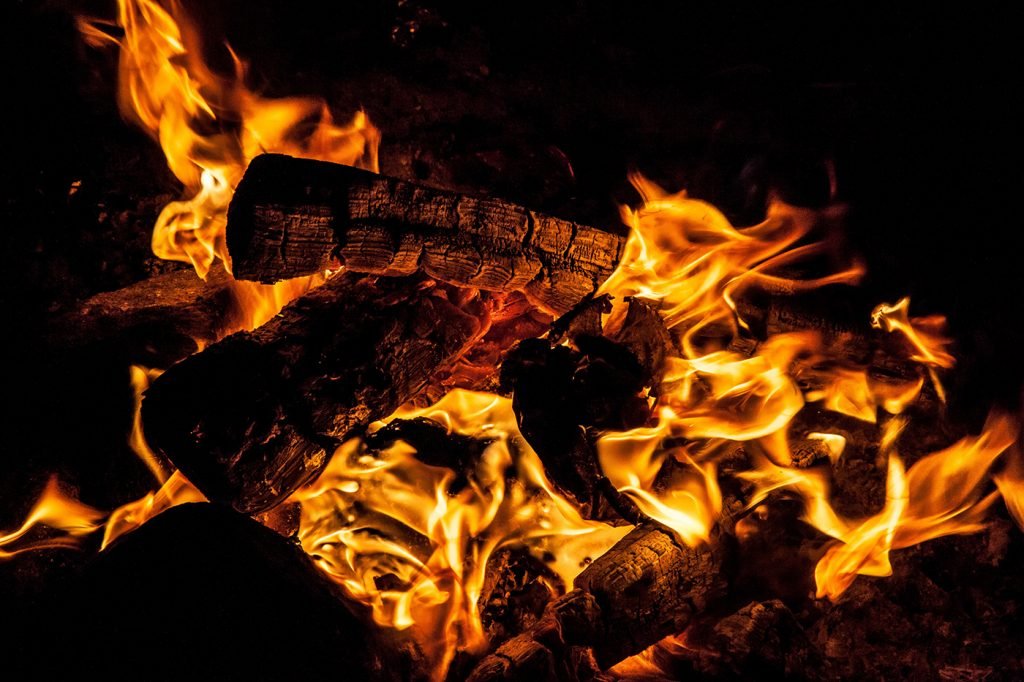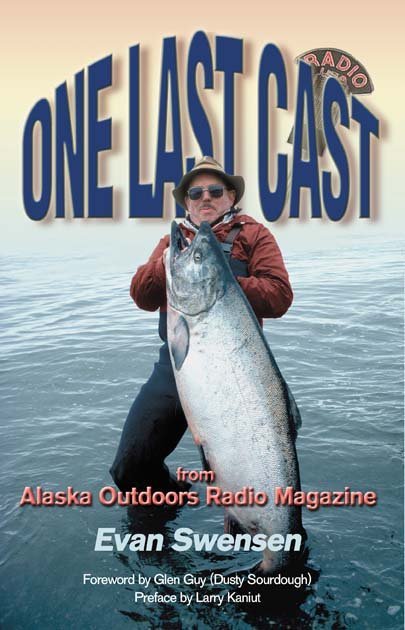One Last Cast
From Alaska Outdoors Radio Magazine
By Evan Swensen
Chapter Five
The Kijik Experience

Kijik, as we were told, means “at one with nature or at peace with the land.” We were making a video comparing the old ways and modern sportfishing. After we’d completed the shooting, we decided to call the video The Kijik Experience.
The video begins with a campfire scene at dusk. Two Alaska Natives are explaining the old ways to a visitor. As they draw pictures in the sand, they tell of how people of the Aleutian Islands and people of the mainland met at Kijik Lake. This was where the two peoples came together. They told of hunting and fishing and using the land. As they talked, with the flicker of the fire reflecting off their faces, the video takes viewers back in time and shows a young man carving a spearhead and attaching it to a long, slender willow shaft. The scene moves to the edge of Kijik Lake and the young man attempts three times to take a fish with his spear, and is successful on the third try.
Leaving the lake with his catch, he accidentally drops his spearhead in the sand near the lake’s edge. The video fades and returns to the fireside history lesson and slowly evolves into two modern-day anglers fishing with an elder Alaska Native, Macy Hobson. The anglers catch and release their share of fish as their Native elder friend instructs them.
Macy invites them to his fish camp, where he teaches them to put out subsistence nets. The net is piled on the back of Macy’s boat, which he rows out into the lake. An anchor is dropped, to which a line is attached to it and the net. Then Macy returns to shore, allowing the net to play off the back of his boat until there is a long fishing net hanging in the water suspended by floats.
After a short time, the net is pulled, and a good number of red salmon are caught in the net. As the net is pulled and picked of its fish, Macy explains that some of his catch will go to his smokehouse and some to his drying rack for dog food. “It takes one fish per day per dog for my dog team,” Macy tells his visitors.
The visitors are then taken to Macy’s drying rack and smokehouse. There they’re taught to fillet fish, leaving both fillets connected at the tail, so they can hang it on drying rack outside or poles in the smokehouse. They’re surprised to learn that the flesh part of the fish goes to the smokehouse for Macy and his family and friends. The bones, with some meat still on them, go on the drying rack for dog food.
When asked by the visitors how dogs could chew the bones and get the meat off without getting bones caught in their mouth or throat, Macy responded that he didn’t know, but the dogs know. That’s what’s important, the dogs know.
As the day of fishing ended and the two visitors followed Macy down the beach, one of the visitors noticed a piece of blackened wood sticking out of the sand. He stopped and pulled it out, revealing a carved spearhead, weathered by time. There are flashbacks of the young native spearing fish and then dropping his spearhead in the sand as the video ends.
We’re left with a warm feeling of the past and present. A feeling of respect for the differences in times, in age, in race. We become one with the land. At peace with nature in Kijik country where people come together—now and anciently. It’s the Kijik experience.


